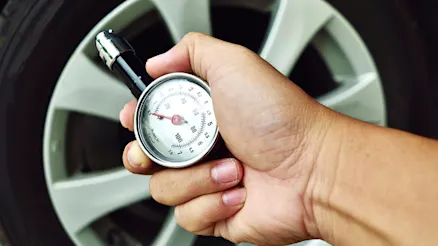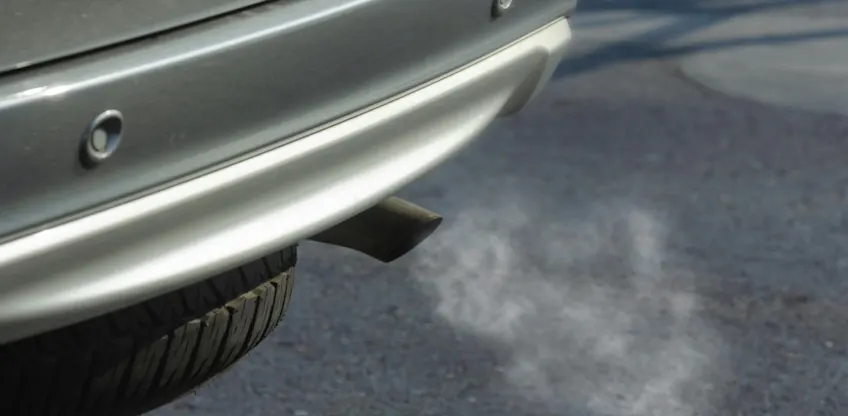
The importance of regularly checking your tyre pressure
Regularly checking your tyre pressure is crucial to your vehicle’s safety, fuel economy and optimal driving.



Regularly checking your tyre pressure is crucial to your vehicle’s safety, fuel economy and optimal driving.

Looking for the perfect gift for the car enthusiast in your life? Carma’s experts have you covered.

Find out which SUVs are best for your next family holiday adventure.
We’re all doing what we can to reduce our impact on this earth, and it’s no different when it comes to driving. A few smart tweaks to how you maintain and drive your car can absolutely help you reduce your driving emissions. There’s even a name for this thoughtful approach: it’s referred to as eco-driving. So what’s involved? From driving techniques to route planning, let's explore how we can all make our car trips cleaner and greener.
Conventional car engines emit greenhouse gases (mainly consisting of carbon dioxide, or CO2), as well as particulate matter and volatile organic compounds (VOCs). A car’s CO2 emissions tend to be closely linked to its fuel consumption, so generally any measures you can take to cut down fuel use will also help to reduce driving emissions.
Let’s look at the first tip, and it’s a really simple one.
Underinflated tyres tend to use more fuel due to added drag, so be sure to keep them inflated to the recommended pressure listed inside the door frame, fuel door or car manual. Your choice of tyres also matters, as those with a lower rolling resistance can reduce fuel consumption without necessarily sacrificing traction or braking performance. As a bonus, looking after your tyres also helps to lengthen their life while giving you a smoother ride.
We’re not saying it’s necessary to strip out the car seats and leave your passengers behind, but losing any unnecessary weight can definitely reduce your emissions while driving.
Every 45kg removed from the car could lower fuel consumption by around 2%, which definitely ends up being pretty substantial over a year. So, consider emptying out that boot and leaving all those bits and bobs at home until you need them.
A car that runs like the well-oiled machine it should be will require less fuel to get from A to B. So make sure you get your car serviced according to the logbook, and address any mechanical issues as promptly as possible. Less friction and a trouble-free drive will help you bring down those emissions, and have you stopping at the service station less often too.

Whether it’s taking a call at the side of the road, waiting for school pick-up or writing a shopping list at the shops, a car’s idling moments can really add up. In fact – idling 10 minutes a day could emit an extra 60kg of carbon dioxide and 110g of noxious fumes per year (plus costing you $35 in fuel). To cut down emissions, turn that key off instead, and make the most of the auto stop-start feature at traffic lights if your car has it.
By planning out your route ahead of time, not only could you find the shortest way to cut your driving emissions, but you could also skip peak hour to minimise the minutes spent idling in traffic. You also won’t have to spend as long staring at the car badge in front of you – so we call that a win all round.
A vehicle's fuel consumption can be a whopping 12 to 17% higher when you install a roof rack or rooftop tent. One 2015 study found that roof racks were responsible for 100 million
extra gallons of fuel (that’s about 378 million litres!) being used per year, and that’s just across the US. Fortunately modern cars are optimised for aerodynamics as well as safety and performance, but still – it pays to reduce drag wherever you can for a cleaner drive!
Smarter driving habits alone could help you reduce your fuel consumption by 15-20% – just think what that could mean for vehicle emissions and your wallet. The first driving tip is to slow down a little, because this can reduce fuel consumption and tyre wear. But driving smoothly also matters, so try and avoid heavy acceleration and braking, and select the right gear if you’re driving a manual. These things can all help to minimise emissions. Plus, of course, sticking to walking or biking if the journey is close to home.
Driving a smaller car, a hybrid or an electric vehicle can help to reduce emissions when compared to a heavy gas-guzzler. So go Goldilocks-style, and look for the ideal size of car that will suit your needs just right.
The Federal Government has a Green Vehicle Guide which you can use to choose a lower-emission ride or even a zero emissions vehicle (ZEV). On Carma you can also filter second-hand cars by CO2 emission ratings, which makes it super simple to find a great used car with a lower environmental impact. In fact, it’s worth checking Carma for multiple reasons when looking at pre owned cars, from the high standards to the 3 month warranty. Just ask the many Sydney car buyers who have been stoked with the car buying process!